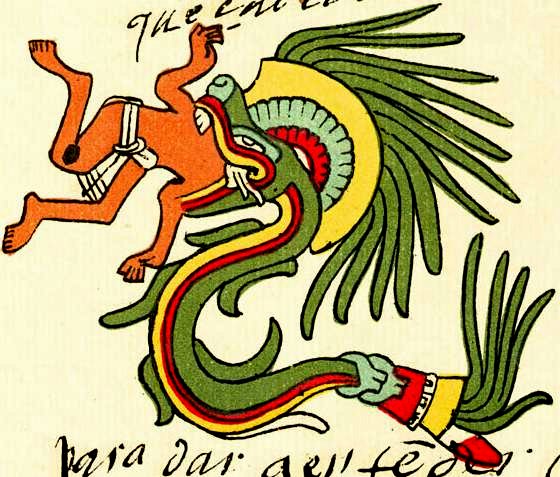1. Fertility
Serpents are obvious phallic symbols, ostensibly resembling elongated sexual organs. While Slaanesh is not solely erotic in nature, he is the prince of excess and pleasure. The Laeren were serpentine beings devoted to his worship, and their temple fully embodied this aspect.
2. Water
The form of a serpent resembles a river. Water was very important in agricultural societies, and is therefore also synonymous with fertility. Water deities often take the forms of snakes.
3. Rebirth and healing
A serpent is able to cast off its skin and emerge anew. This has led many cultures to hypothesize that snakes are immortal and can be reborn. In Greek myth, the demigod Asclepius learned the secrets of medicine after watching snakes. In Mesopotamian mythology, Gilgamesh obtains a herb that will grant him eternal life, but a snake steals and eats it. Fulgrim himself of course undergoes a transformative process when he ascends to daemonhood.
4. Guardianship
Serpents are represented as potent guardians of temples and other sacred spaces. This connection may be grounded in the observation that when threatened, some snakes frequently hold and defend their ground, first resorting to threatening display and then fighting, rather than retreat. Thus, they are natural guardians of treasures or sacred sites which cannot easily be moved out of harm's way.
Hindu imagery commonly involved cobras sheltering deities under their hoods. The naga is considered a mighty nature spirit with the partial body of a human and the tail of a snake.
Hindu imagery commonly involved cobras sheltering deities under their hoods. The naga is considered a mighty nature spirit with the partial body of a human and the tail of a snake.
5. Danger and Poison
Serpents are predators, and even small snakes are potentially dangerous if armed with venom. This connection depends in part on the experience that venomous snakes often deliver deadly defensive bites without giving prior notice or warning to their unwitting victims. The worship of the feathered serpent was wide spread among the Aztecs as Quetazlcoatl, a fearsome deity for a warlike people.
Reptiles have long stirred deep feelings of fear and awe in humans. In East Asia, dragons are particularly serpent like. Some scientists have conjectured that mammals have been hard wired since the time of the dinosaurs to fear reptiles, and this may be why stories of dragons, though mythical, are near universal.
7. Deceit
The serpent does not walk on feet like a normal animal. Nor does it travel in a straight line. Instead it slithers from side to side in a circuitous manner in a deceptive manner. In the Garden of Eden, it was a serpent that spoke honeyed words to Eve and tricked her into eating the fruit of the tree of knowledge.
8. Disorder
Jormungandr, the great world serpent, surrounds Midgard in Norse myths and awaits its destruction. The Ouroboros represents the primal state, and the formless disorder that surrounds order and is involved in periodic renewal. The Egyptian deity Apep sought to swallow the sun, causing eclipses.


















